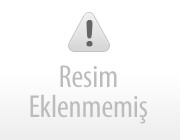Trading The Broadening Wedge: Your Start To Profit Guide
| Modul | Genişlik | Derinlik | Yükseklik |
Here are a few super important chart patterns that you should be aware of if you want to improve your trading strategy and technical analysis. While most patterns have converging trend lines, the broadening wedge has diverging ones. The success rate of rising wedges can vary, but generally, they are considered reliable patterns if confirmed by other indicators and volume.
Variations of the Rising Wedge Pattern
Ascending Broadening Wedges tend to breakout in the direction of the previous price trend and so act as continuations of this move. With the Ascending Broadening Wedge formation we are looking for three peaks and three valleys with tops and bottoms forming the trendlines. The higher highs make a rising trend line, this forms the upper boundary to our pattern.
This can be seen on a price chart as a series of peaks and troughs that are all moving in the same direction. The first step in identifying this pattern is to look for a series of highs and lows. This formation is created by two trendlines that diverge from each other and form a right angle.
Recognizing a valid rising wedge requires attention to specific characteristics. When price falls off the upper trendline, and doesn’t reach the lower trendline before rising back to the upper trendline. Although it’s a bit tedious and even boring at times, good record keeping is a crucial step of becoming a profitable trader. Also, one thing you’ll find when you make the transition to a higher time frame is that false breaks become a rarity, at least compared to a 5 or 15-minute chart.
Investors often look for these subtle cues to tweak their strategies. Place it just above the recent high in a downtrend or below the recent low in an uptrend. This minimizes your risk and ensures you’re not throwing away money on a bad trade.
The NZDUSD 1-hour chart above shows a wedge at the top of a range. Shortly after closing below support the pair declines by 104 pips, which is the profit potential that we’re after. In this post, you’ll learn how to identify the most profitable patterns, my two favorite entry methods, and a stop loss strategy that won’t let you down. A 2019 research study (revised 2020) called “Day Trading for a Living?
How do I find a rising wedge pattern in a chart?
The target for this trade could be the same as the height of the wedge. On the other hand, the right-angled descending broadening wedge consists of a horizontal top followed by a down-sloping trendline. The falling broadening wedge can be bullish, bearish or neutral, depending on the direction of the breakout. The broadening descending wedge pattern is formed by two diverging lines that connect a series of lower highs and lower lows. Take your trading to the next level with Above the Green Line’s comprehensive trading education and analysis tools.
Trading the Rising Wedge Pattern
Tall and wide patterns work better than short and narrow patterns. These are Fibonacci retracement points, providing additional technical support for price objectives. The use of advanced trading tools like TradingView and TrendSpider further simplifies pattern recognition and increases trading efficiency, making the process seamless and more accurate.
The initial news can cause price swings that widen as the market digests new information, forming a pattern with diverging trendlines. So, before adding the broadening wedge pattern to your trading arsenal, it’s important to set the appropriate frame of mind. A rising wedge is formed when the price consolidates between upward sloping support and resistance lines. Conversely, in a bullish trend, an upward breakout from the support line is your cue to go long. Again, set a stop loss and a profit target to manage your risk effectively.
- Once you have identified this series, you will then need to look for the divergence between the highs and lows.
- Only then can you label the structure as confirmed and thus tradable.
- Once a side is chosen, it makes the investor or trader bearish or bullish..
- This is where you want to go short, but make sure to set your stop loss to minimize risk.
- This guide will provide examples of a rising wedge in an uptrend and a rising wedge in a downtrend, along with how to trade them.
- The formation is considered complete when the price breaks outside the megaphone shape.
It’s essential to confirm that the breakout points genuinely form the ascending wedge as defined by the trendlines. Traders often initiate short positions once they correctly identify the pattern and see confirmation of the bearish reversal. It’s worth noting that a decrease in trading volume often accompanies this pattern, although it doesn’t always occur. The formation of an expanding wedge pattern starts with a series of higher highs and lower lows.
Perhaps this is why it’s one of the most overlooked steps of becoming a successful Forex trader. As with everything rising broadening wedge pattern you do while trading the Forex market, it’s important that you track your results both good and bad. Although I don’t know anything about you or the way you trade, I would be willing to bet that you’re overtrading. Last but certainly not least is the fact that a higher time frame gives you just that – more time. This translates to less anxiety and frustration because you aren’t rushing to determine a favorable target or to place a trade. The NZDUSD chart below illustrates where I set my take profit and why.
- In the case of the broadening wedge, look for instances where the price has made a significant move either towards the support or resistance line, followed by a reversal.
- The rectangle pattern, for instance, offers its own set of trading opportunities and challenges.
- Notice that we have a support and resistance level as well as the price action that forms the consolidation.
- You should consider whether you understand how CFDs work and whether you can afford to take the high risk of losing your money.
- During the rise up, prices ricochet between two ascending trend lines, until the lower support line breaks down and a large move ensues.
- Understanding how to recognize and trade the rising wedge pattern can provide valuable insights for market entry and exit strategies.
A descending broadening wedge pattern is the mirror image of the ascending broadening wedge.Trendlines in this pattern diverge, and at the same time, they fall as the structure completes. A rising wedge is generally a bearish signal as it indicates a possible reversal during an uptrend. Rising wedge patterns indicate the likelihood of falling prices after a breakout through the lower trend line. Picture a trail that switchbacks as it gradually narrows up a mountain, eventually reaching a point where hikers must go over or turn back.
Note that a partial rise always starts from the test of the support. Broadening wedges are characterized by price variations laying within one support and resistance , both having the same direction and broadening over time. As such the apex of the support/resistance in a broadening wedge is located to the left.Broadening wedges must not be confused with other broadening formations. While they all have a broadening characteristic they can have different identification rulesBroadening wedges are classified depending on the direction of the support/resistance. We also review the literature in order to find their deterministic cause. A pattern wedge refers to a specialized chart formation where trend lines converge, indicating an area of struggle between buyers and sellers.
Analyze volume surges on breakouts and incorporate momentum oscillator signals. Combining wedge pattern trading with secondary indicators boosts the probability of capturing outsized gains. Master this structured approach to trading wedge patterns for the optimal balance of risk versus reward. Calculating potential price targets after a rising wedge breakdown helps traders set realistic exit points and manage risk effectively.


